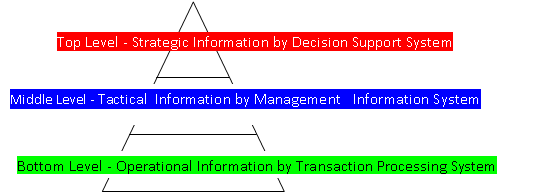As we discussed in last lectures about System, System Analysis and Design and System Analysis Tools. Now our topic of discussion is Information Systems. Lets Start
Management Information System deals with the systems which produce information for the management at different levels for their proper functioning. Although it is not absolutely essential for MIS, yet it is the computer which has made a reality of the fundamental concepts of MIS. Its assets are speed, accuracy, consistency and the ability to handle large volumes of data. It however lacks judgement for which the human beings can complement it. The general term system, is more specifically applicable to the information systems, are going to be of our main interest. Thus the term MIS may be defined as an integrated man-machine system in producing information to support the operations, management planning & control and decision making functions in an organisation.
Man and machine are thus complimentary to each other and the question really is to what extent computers should be employed. Before we begin the detailed discussion on the various factors to be analysed for the design of a detailed MIS, it will be worthwhile to have a look at the computer technology as it has changed over the last few years which has affected the very design of MIS.
DATA Vs. INFORMATION
The word data is the plural of datum, which means fact. Data, then, are facts, the raw material of information. Data are represented by symbols, but they are not information except in a limited sense. As used in data processing, information is data arranged in an order and form useful to the people who receive it. However, information is relevant knowledge, produced as the output of data processing operations and acquired by people to enhance understanding and to achieve specific purpose. Figure illustrate the differences between data and information.

Data (Input) Information (After Processing)
 Loading...
Loading...
INFORMATION
Information is one of the most vital tools for the management. Modern industrial society is faced with Information Explosion. Information has been regarded as an important resource since companies spend major chunk of their costs towards collecting, processing and transmitting the information to various levels of management for their proper.
Continue reading “Management Information System : An Overview”


